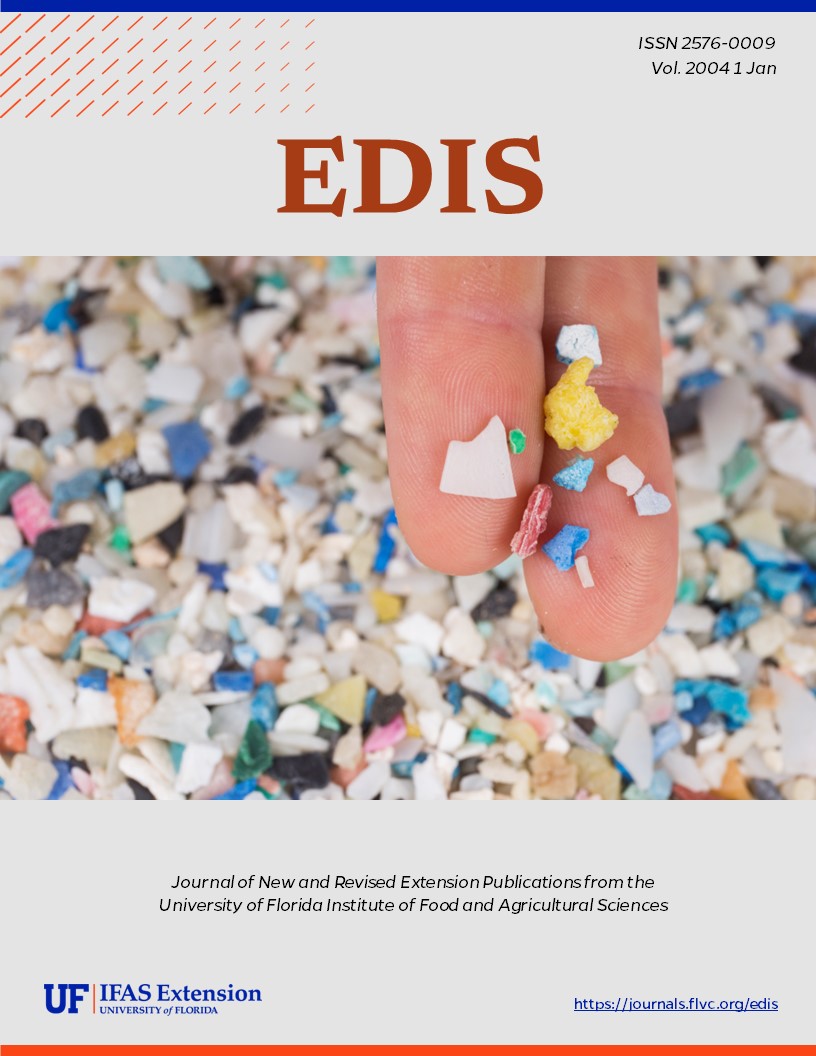Abstract
Recirculating aquaculture systems, also known as water reuse systems, are commonly found in aquaculture production facilities, public aquaria, tropical fish wholesale operations, and retail pet stores. When properly managed, these systems have the advantages of both reducing overall water usage, as compared to flow-through systems, and improving control of many aspects of nutrition and water quality, as compared to pond systems. However, recirculating systems have their own unique set of problems. They are not a substitute for
good management and often require more time and care than flow-through systems. They certainly are not a “silver-bullet” for eliminating fish diseases. In addition, defining the primary intended use of a system will help optimize efficiency and utility in the design process. This series of circulars – Fish Health Management Considerations in Recirculating Aquaculture Systems: Parts 1, 2 and 3 – provides basic information that should assist the beginning- or intermediate-level aquaculturist interested in working successfully with recirculating systems. This circular, Part 1, provides basic principles and guidelines for preventative medicine and system design. This document is Circular 120, one of a series of the Fisheries and Aquatic Sciences Department, Florida Cooperative Extension Service, Institute of Food and Agricultural Sciences, University of Florida. Original publication date: December 2003.
References
Bedell G.W. 1971. Eradicating Ceratomyxa shasta from infected water by chlorination and ultraviolet irradiation. Progressive Fish-Culturist 33: 51-54. https://doi.org/10.1577/1548-8640(1971)33[51:ECSFIW]2.0.CO;2
Collins M.T., J.B. Gratzek, D.L. Dawe and T.G. Nemetz. 1975. Effects of parasiticides on nitrification. Journal of the Fisheries Research Board of Canada 32: 2033-2037. https://doi.org/10.1139/f75-239
Collins M.T., J.B. Gratzek, D.L. Dawe and T.G. Nemetz. 1976. Effects of antibacterial agents on nitrification in an aquatic recirculating system. Journal of the Fisheries Research Board of Canada 33: 215-218. https://doi.org/10.1139/f76-032
Hach Company. 2002. Water Analysis Handbook, Fourth edition. Hach Company, Loveland, CO. 1260 pp.
Hoffman G.L. 1974. Disinfection of contaminated water by ultraviolet irradiation with emphasis on whirling disease (Myxosoma cerebralis) and its effect on fish. Transactions of the American Fisheries Society 103: 541-550. https://doi.org/10.1577/1548-8659(1974)103<541:DOCWBU>2.0.CO;2
Kasai H., M. Yoshimizu and Y. Ezura. 2002. Disinfection of water for aquaculture. Fisheries Science, Volume 68, Supplement I, pp. 821-824. Blackwell Publishing, Oxford, UK. https://doi.org/10.2331/fishsci.68.sup1_821
Levine G. and T.L. Meade. 1976. The effects of disease treatment on nitrification in closed system aquaculture. Proceedings from the 7th Annual Meeting of the World Mariculture Society, J.W. Avault Jr. (editor), pp 483-493. World Mariculture Society, Louisiana State University, Baton Rouge, LA. https://doi.org/10.1111/j.1749-7345.1976.tb00083.x
Miocevic I., J. Smith, L. Owens and R. Speare. 1993. Ultraviolet sterilization of model viruses important to finfish aquaculture in Australia. Australian Veterinary Journal 70: 25-27. https://doi.org/10.1111/j.1751-0813.1993.tb00793.x
Nagy R. 1964. Application and measurement of ultraviolet irradiation. American Industrial Hygiene Association Journal 25: 274-281. https://doi.org/10.1080/00028896409342587
National Research Council. 1993. Nutrient Requirements of Fish (Committee on Animal Nutrition, Board on Agriculture). National Academy Press, Washington, DC. 114 pp.
Normandeau D.A. 1968. Progress Report, Project F-14-R-3, State of New Hampshire (Mimeo).
Rodriguez J. and T.R. Gregg. 1993. Considerations for the Use of Ultraviolet in Fish Culture in Techniques for Modern Aquaculture: Proceedings of an Aquaculture Engineering Conference 21-23 June 1993, p 482. American Society of Agricultural Engineers, St. Joseph, MI.
Spotte S. 1979. Fish and Invertebrate Culture: Water Management in Closed Systems, Second edition. John Wiley and Sons Inc., New York, NY. 179 pp.
Vlasenko M.I. 1969. Ultraviolet rays as a method for the control of disease of fish eggs and young fishes. Journal of Ichthyology (formerly, Problems of Ichthyology) 9: 697-705.
Yoshimizu M., H. Takisawa and T. Kimura. 1986. UV susceptibility of some fish pathogenic viruses. Fish Pathology 21: 47-52. https://doi.org/10.3147/jsfp.21.47
Unless otherwise specified, articles published in the EDIS journal after January 1, 2024 are licensed under a Creative Commons Attribution-NonCommercial-NoDerivs 4.0 International (CC BY-NC-ND 4.0) license.

